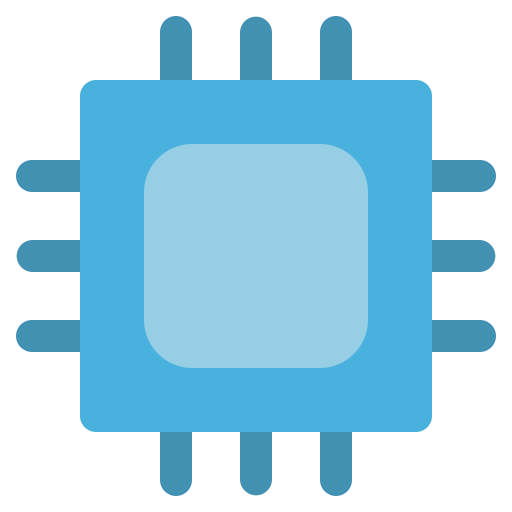

No most people in the developed nations earn less than this. It’s heavily biased towards Americans and high earners, the typical just above the minimum wage earner isn’t in this group.


No most people in the developed nations earn less than this. It’s heavily biased towards Americans and high earners, the typical just above the minimum wage earner isn’t in this group.


The console market ever since the PS3 and xbox 360 has been a leech on the PC platform market. They turn up every X years apart to buy a cheap GPU and CPU on a chip and demand rock bottom prices for volume and pay for none of the research and development in the intervening years.


After he acquired it all and spent decades doing illegal stuff for which Microsoft received extensive anti trust fines. Lets not kid ourselves here is trying to redeem himself for his prior billionaire behaviour and it often comes off more as “greenwashing” than actually helping people.


Wealth based fines would be extremely based. Most people would pay nothing and the wealthy would be paying a heck of a lot more. Which is why it will never happen its all about punishing the workers.


https://grid.iamkate.com/ and https://www.gridwatch.templar.co.uk/. https://app.electricitymaps.com/map/72h/hourly is also of interest as it shows some comparison across countries on CO2e intensity across nations.
You can’t check historical granular data but you can look at that granularity for the past 24 hours. If you look at this over many years on many different days you get an impression of the max and minimums of demand and production of the various types as I do now. Wish they did some more stats breakdown however so this was clearer from someone coming new to the site without experience of the data.


The UK is no where near the point of having too much power through the daytime. Today was pretty sunny, better than average day especially for time of year. At mid day there was still 5.8GW of fossil fuel use and 3GW of biomass, so about 8.8 GW of CO2 production. Or to put it another way of the 32.5 GW of power needed solar contribute 3.41GW.
There will come a moment where there is an issue where more storage is required to use that power through the evening and night or negative power pricing but its not the issue yet there still isn’t enough renewables to make it through a day without burning gas even on a windy sunny day so promoting more Solar and Wind is still necessary to get to netzero for grid power in 2030.


When it comes to house infrastructure we expect that it will keep working for decades. I don’t think smart tech that requires the internet is at all a good idea and why I don’t use anything that does, but there is bound to be issues with bluetooth and wifi connected devices generally if they don’t have updates and support for the coming decades.
Companies need to be thinking about the length of support more for house installed devices because the cost of the device often pales compared to the installation costs and replacing them is often a big job.


I don’t think this affects anything other than some really ancient machines from the 1990s which would struggle to have enough RAM to run modern Linux anyway. But the problem is I could be wrong about that and there could be embedded systems that do need modern updates due to internet exposure about or other systems running apparently old instruction sets all over the world. I don’t know so I would want to see a feedback site set up for people to say if they need this support and to estimate how many exist.


The DMZ for the ISPs router forward to the second router, then everything that hits your outside IP will be forwarded to router 2. Then on Router 2 you open the ports for your service and forward to the internal machine. That should all work fine.


So people are paying full price to buy a rental that will be taken away in the future whenever EA decides its not worth running the servers any more.


Its quite complicated to setup as well, just went through the instructions and its a long way from just add to docker and run unfortunately. Would be nice to be able to just get a runner in the same or different docker and it just works easily without a lot of manual setup in Linux of directories and users and pipes etc.


Not necessarily. Ignore chiplets because that is mostly about yield and price and look at what happens when we go very threaded. Smaller cores with less clockspeed take up less space and less power and are more efficient with both which leads to more total compute performance in a given space and power budget. The ideal CPU in a highly multithreaded environment has a small number of P cores that matches the number of single threaded combining threads and as many E cores as possible due to Amadhl’s law. The single threaded part comes to dominate given enough multithreading and all algorithms have some amount of single threaded accumulation of results.
AMD is working with the same limitations and bigger cores with more clockspeed will always have less total cores and achieve less total compute performance in that space. The single threaded component will dominate at high core counts so the answer is not all P cores and not all E cores and AMDs cores should be considered P cores. The ideal number of P cores is definitely more than 1 because the GPU requires one of those high performance threads and the game will need at least one depending on how many different sets of parallel tasks it is running.
But the problem is this theoretical future is a bit far off because we can clearly do today’s games with 6 cores quite happily and most don’t really utilise 6 cores well. They tend to prefer all high performance cores, no one is yet at the stage of dealing with the added complexity of heterogenous CPU core performance and its why both AMD and Intel have special scheluders to improve game utilisation a bit better, this approach of differing core performance first a little and then with E cores quite a lot is too new since big AAA games are in development for many years. So while its likely the future gains from silicon slow further, necessitating optimising the compute density and balance of cores, its unclear when Intel’s strategy will pay off in games, it pays off in some productivity applications but not games yet.
I am certain this approach and further iterations of it with multiple different levels and even instruction sets are quite likely the future of computing, so far its been critical for the GPUs success, its really unclear when that likely future will happen. It definitely doesn’t make sense now or the near future so buying a current Intel CPU for games makes no sense.


I did the same move from contabo to Netcup. Contabo I had all sorts of weird bandwidth limiting problems that I couldn’t explain and which the continued to deny they were throttling. Netcup worked perfectly.
So many of the GPUs have been crippled for the purposes of gaming and there is zero incentive for Nvidia to produce drivers for those cards to do anything else. Alas they will just end up in landfill.


Its going to have a tendency towards bitterness.


One of the issues here is that being a Chinese paper in any field is still the most correlated with the paper being faked in some way. So while china is producing a lot of science and good science its also the world leader in garbage fake science too and it needs to get a handle on the problem.


I suspect it’s just corruption. As we have seen government works by giving their friends the work at crazy markups with no requirement anything be delivered. The end result is lots of people getting rich off government contracts and low quality infrastructure at best.


OpenWRT supports two devices for wifi 7 on filogic 880 at the moment in snapshot, the banana R4 with BE14000 wifi card add on, its a development board, and the Asus BT8. There are still plenty of issues but Wifi 7 is starting to come to OpenWRT and these MT7988 devices are going to be the major thing supported first.
The movie was ok but I am not sure I want to watch an extra hour of it when seeing it again!